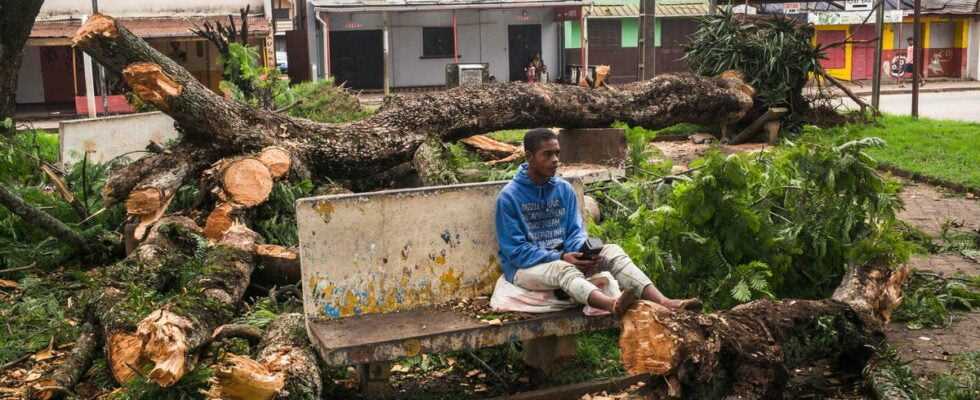The head of disaster management in Madagascar, Paolo Emilio Raholinarivo, reported ten people dead and nearly 48,000 displaced, according to a provisional report. The Malagasy authorities previously indicated that the cyclone was losing its power but that floods were still to be feared. According to Météo-Madagascar, Batsirai should “come out at sea in the Mozambique Channel at the level of the northern part of Atsimo Andrefana in the afternoon or next night”.
” We are sad “
The inhabitants had prepared to cope with the means at their disposal on the island, one of the poorest countries in the world, already hit by a deadly tropical storm in January, Ana, and swept since Friday by the wind and continuous rain. In the city of Mahanoro (east), overlooking the sea, Marie Viviane Rasoanandrasana, sitting on the ground, lamented the damage caused by the cyclone in the municipal cemetery where her husband, father-in-law and daughter are buried. The waves swept away part of the cemetery, digging up several bodies, including those of his family.
” We are sad […] We have already had damage to the house because of the cyclone. Now this! “, lamented this 54-year-old widow. “Daily life is already very hard,” she continued, before explaining that the remains would be placed in temporary graves until her family raised enough money for “proper burials”. In the coastal town of Vatomandry (east), hours before Batsirai’s arrival, more than 200 people had crowded into a room in a Chinese-owned concrete building for protection, with families sleeping on mats or mattresses.
LAURE VERNEAU/AFP
Lack of drinking water
A local official, Thierry Louison Leaby, complained about the lack of drinking water, the supply having been cut before the storm. “People are cooking with dirty water,” he said, fearing an outbreak of diarrhea. “The government must absolutely help us. We weren’t given anything.” Outside, dishes and plastic cups collected rainwater pouring from corrugated iron roofs, often reinforced with heavy sandbags or jerry cans.
